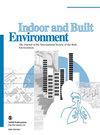沙特公立学校节能的创新改造方法
IF 2.9
3区 工程技术
Q2 CONSTRUCTION & BUILDING TECHNOLOGY
引用次数: 0
摘要
沙特建筑使用了约 29% 的一次能源和约 80% 的电能。由于气候炎热干燥,空调需要消耗大量电能才能使室内达到舒适的温度。超过 70% 的沙特建筑需要隔热。本研究的目的是评估沙特阿拉伯公立学校现有的节能情况。通过使用 LSI LASTEM "R-LOG "数据记录器对三座学校建筑进行了室内热环境监测,同时还收集了学校的电能账单。使用 DesignBuilder 软件对学校建筑进行了建模,并利用该软件调查了对建筑围护结构进行各种改造的影响,包括改变建筑朝向、加入隔热层、各种类型的玻璃和遮阳设备。研究结果表明,对现有学校采用适当的建筑围护结构设计技术,可以显著降低制冷和总体能耗,分别节约 30% 和 19%。在综合应用这些策略后,学校的年度总耗电量减少了近 19.2%,从每年 279.13 兆瓦时减少到 225.5 兆瓦时。本文章由计算机程序翻译,如有差异,请以英文原文为准。
Innovative retrofitting approaches for energy saving in Saudi public schools
Saudi buildings use approximately 29% of the primary energy and about 80% of the electrical energy. Because of the hot and dry climate, air conditioners consume a lot of electrical energy to attain a comfortable temperature indoors. More than 70% of Saudi buildings need to be thermally insulated. The objective of this study is to assess the existing energy saving of public schools in Saudi Arabia. Indoor thermal environment monitoring of three school buildings has been undertaken by employing LSI LASTEM ‘R-LOG’ data loggers, and electric energy bills of the schools were also collected. The school building was modelled using DesignBuilder software, which was utilized to investigate the impact of various modifications made to the building envelopes, including changes to building orientation, the inclusion of thermal insulation layers, various types of glass and shading devices. According to the findings, implementing appropriate building envelope design techniques for existing schools can lead to significant reductions in cooling and overall energy consumption, with savings of 30% and 19%, respectively. After applying these strategies collectively, the school managed to reduce its total annual electricity consumption by nearly 19.2%, resulting in a decrease from 279.13 MWh to 225.5 MWh per year.
求助全文
通过发布文献求助,成功后即可免费获取论文全文。
去求助
来源期刊

Indoor and Built Environment
环境科学-工程:环境
CiteScore
6.40
自引率
25.00%
发文量
130
审稿时长
2.6 months
期刊介绍:
Indoor and Built Environment publishes reports on any topic pertaining to the quality of the indoor and built environment, and how these might effect the health, performance, efficiency and comfort of persons living or working there. Topics range from urban infrastructure, design of buildings, and materials used to laboratory studies including building airflow simulations and health effects. This journal is a member of the Committee on Publication Ethics (COPE).
 求助内容:
求助内容: 应助结果提醒方式:
应助结果提醒方式:


